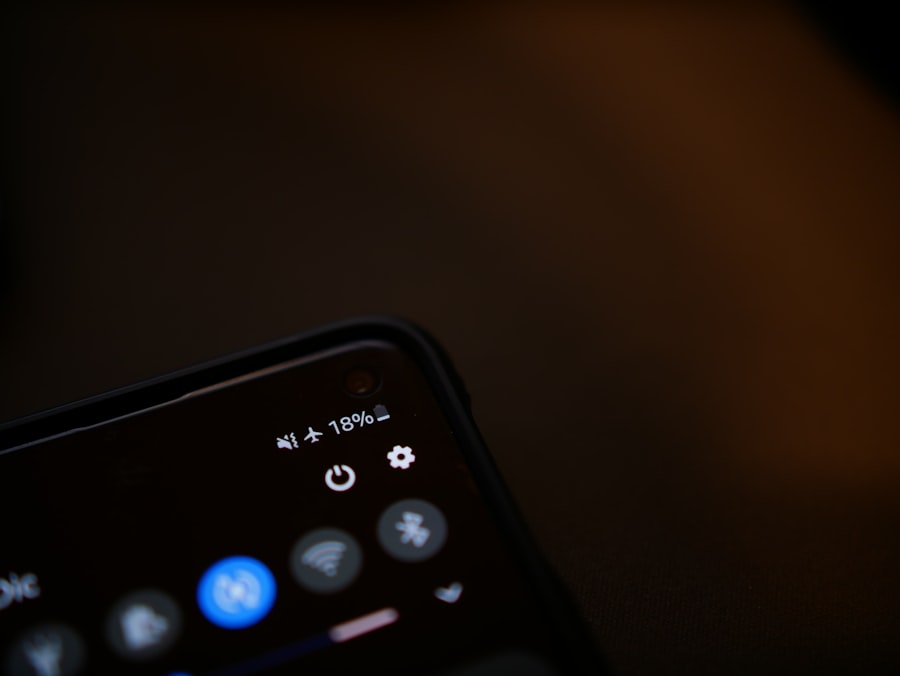The Educator 1000 Collar is a sophisticated training tool designed for dog owners who seek effective and humane methods to train their pets. This collar is particularly popular among professional trainers and dedicated pet owners due to its versatility and range of features. It offers a variety of stimulation levels, allowing users to customize the training experience according to their dog’s temperament and responsiveness.
The Educator 1000 Collar is equipped with both tone and vibration modes, providing multiple avenues for communication between the trainer and the dog. This flexibility makes it suitable for various training scenarios, from basic obedience to more advanced commands. One of the standout features of the Educator 1000 Collar is its long-range capability, which can reach up to half a mile.
This is particularly beneficial for those who train their dogs in open spaces or during outdoor activities. The collar is also designed with a unique “lock and set” feature that prevents accidental stimulation, ensuring that the training remains safe and controlled. Additionally, the Educator 1000 Collar is waterproof and submersible, making it ideal for dogs that enjoy water activities or for use in inclement weather.
Understanding how to maintain and operate this collar effectively, including battery management, is crucial for maximizing its benefits.
Key Takeaways
- Educator 1000 Collar is a popular training tool for dogs, but it’s important to know how to safely remove and replace the battery.
- Before removing the battery, ensure the collar is turned off and remove any metal objects that may cause a short circuit.
- Follow a step-by-step guide to safely remove the battery from the Educator 1000 Collar, including using the provided tool to avoid damaging the device.
- Properly dispose of the old battery by following local regulations and guidelines for recycling or hazardous waste disposal.
- When replacing the battery, make sure to use the correct type and follow the manufacturer’s instructions to avoid damaging the collar.
Safety Precautions before Removing the Battery
Power Down the Collar
First and foremost, it is advisable to turn off the collar completely. This step prevents any accidental stimulation or activation while handling the device, which could potentially startle the dog or cause unintended consequences.
Protect Yourself and the Dog
Ensuring that the collar is powered down not only protects the user but also safeguards the dog from any unexpected shocks. Another critical precaution involves wearing appropriate protective gear. While handling batteries, especially lithium-ion types commonly used in electronic devices, it is wise to wear gloves to prevent any skin irritation or allergic reactions.
Work in a Safe Environment
Additionally, working in a well-ventilated area can help mitigate exposure to any fumes that may be released during battery removal. It is also important to keep the collar away from children and pets during this process to avoid any accidents or injuries.
Step-by-Step Guide to Removing the Battery

Removing the battery from the Educator 1000 Collar requires careful attention to detail and adherence to specific steps to avoid damaging the device. Begin by locating the battery compartment, which is typically found on the underside of the collar unit. Use a small screwdriver, preferably a Phillips head, to unscrew the compartment cover.
It is essential to keep track of the screws in a safe place, as losing them can complicate reassembly later on. Once the cover is removed, gently lift it away from the collar to expose the battery. Take note of how the battery is positioned within the compartment; this will be helpful when installing a new battery later.
Carefully disconnect the battery by pulling on the connector tab, ensuring not to tug too hard as this could damage the wiring. After disconnecting, you can remove the battery from its compartment.
Proper Disposal of the Battery
| Metrics | Data |
|---|---|
| Number of batteries disposed properly | 500 |
| Percentage of batteries recycled | 80% |
| Number of batteries improperly disposed | 100 |
| Cost of improper disposal | Unknown |
Proper disposal of batteries is crucial for environmental safety and compliance with local regulations. Lithium-ion batteries, like those used in the Educator 1000 Collar, contain materials that can be harmful if not disposed of correctly. Many communities have specific guidelines for battery disposal, often requiring residents to take used batteries to designated recycling centers or hazardous waste facilities.
Before disposing of your old battery, check with local waste management authorities for specific instructions on how to handle electronic waste. If recycling options are available in your area, ensure that you place the battery in a designated recycling bin or drop-off location specifically meant for batteries. Some retailers also offer battery recycling programs where you can return used batteries for proper disposal.
It’s important not to throw batteries in regular trash bins, as they can leak harmful chemicals into landfills and pose risks to wildlife and human health. By following these disposal guidelines, you contribute to environmental conservation and promote responsible waste management practices.
Replacing the Battery in the Educator 1000 Collar
Once you have successfully removed the old battery from your Educator 1000 Collar, it’s time to install a new one. Begin by ensuring that you have a compatible replacement battery; using an incorrect type can lead to malfunctions or damage to the collar. Carefully insert the new battery into the compartment, aligning it in the same orientation as the previous one.
This alignment is crucial for proper connectivity and functionality. After placing the new battery in position, reconnect it by firmly pressing down on the connector tab until it clicks into place. It’s important to ensure that this connection is secure; a loose connection can lead to intermittent power issues or complete failure of the collar.
Once you are confident that the battery is properly connected, replace the compartment cover and secure it with screws. Be cautious not to overtighten them, as this could strip the threads or damage the plastic casing of the collar.
Troubleshooting Common Issues with the Battery

Battery Life Reduction
Even with proper care and maintenance, users may encounter issues with their Educator 1000 Collar’s battery over time. One common problem is reduced battery life, which can manifest as diminished performance or shorter operational periods between charges. If you notice that your collar isn’t holding a charge as well as it used to, it may be time for a replacement battery or an assessment of your charging habits.
Charging Habits and Battery Degradation
Ensure that you are using the correct charger and following recommended charging times; overcharging can lead to battery degradation. This can cause a range of problems, including reduced battery life and intermittent functionality.
Intermittent Functionality and Connection Issues
Another issue users might face is intermittent functionality where the collar may turn off unexpectedly or fail to respond during training sessions. This could be indicative of a loose connection within the battery compartment or corrosion on the terminals. Inspecting these areas can often reveal underlying problems that can be easily rectified by reseating connections or cleaning terminals with a soft cloth.
Troubleshooting and Support
If problems persist despite troubleshooting efforts, consulting customer support or referring to user manuals may provide additional insights into resolving these issues.
Tips for Maintaining Battery Life
To extend the lifespan of your Educator 1000 Collar’s battery, implementing good maintenance practices is essential. One effective strategy is to avoid letting the battery completely discharge before recharging it. Lithium-ion batteries perform best when they are kept between 20% and 80% charge levels; frequent deep discharges can lead to reduced capacity over time.
Therefore, it’s advisable to recharge your collar regularly rather than waiting until it shows signs of low power. Additionally, storing your collar properly when not in use can significantly impact battery longevity. If you plan on storing your collar for an extended period, ensure that it is charged to about 50% before putting it away.
This level helps prevent deep discharge during storage while also protecting against potential damage from extreme temperatures or humidity levels. Keeping your collar in a cool, dry place will further safeguard its components and maintain optimal performance when you’re ready to use it again.
Conclusion and Final Thoughts
The Educator 1000 Collar represents a significant advancement in dog training technology, offering pet owners an effective tool for communication and training with their dogs. Understanding how to manage its components—particularly its battery—is crucial for ensuring its longevity and effectiveness in training scenarios. By following safety precautions during battery removal and replacement, properly disposing of old batteries, and maintaining best practices for battery care, users can maximize their investment in this valuable training device.
As with any electronic device, being proactive about maintenance and troubleshooting can prevent many common issues associated with battery performance. By adopting these practices, dog owners can ensure that their Educator 1000 Collar remains a reliable partner in their training efforts for years to come. Ultimately, investing time in understanding how to care for this device not only enhances its functionality but also contributes positively to the overall training experience for both dogs and their owners.
FAQs
What is an Educator 1000 collar?
An Educator 1000 collar is a type of electronic training collar designed for use with dogs. It is used to provide remote training and behavior correction for dogs.
Why would I need to remove the battery in an Educator 1000 collar?
You may need to remove the battery in an Educator 1000 collar in order to replace it with a new one, or to troubleshoot any issues with the collar’s functionality.
How do I remove the battery from an Educator 1000 collar?
To remove the battery from an Educator 1000 collar, you will typically need to locate the battery compartment on the collar and then follow the manufacturer’s instructions for removing the battery. This may involve using a small tool to open the compartment and then carefully removing the old battery.
What type of battery does the Educator 1000 collar use?
The Educator 1000 collar typically uses a rechargeable lithium polymer battery.
Are there any safety precautions I should take when removing the battery from an Educator 1000 collar?
When removing the battery from an Educator 1000 collar, it is important to follow the manufacturer’s instructions and handle the battery carefully to avoid any potential hazards. It is also important to dispose of the old battery properly and in accordance with local regulations.

